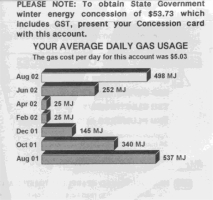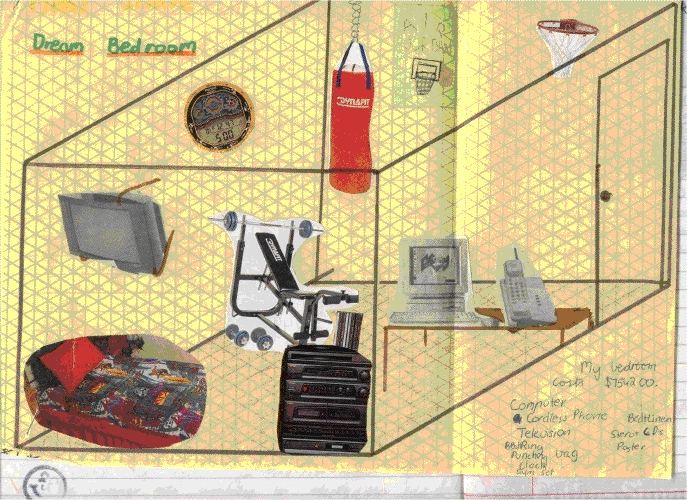Real World Investigations: 4.0
Supporting materials
Indicator of Progress
Students can identify the information needed to solve problems that relate to real world situations. This includes being able to identify:
- relevant variables or information that will help solve the problem
- operations and calculations that need to be performed
- ways of interpreting, representing and depicting information
- how assumptions or changes in the situation might affect the outcome, and
- what needs to be explained when communicating the solution.
Students often have difficulty selecting the appropriate operations and quantities to use when solving problems that are set in the real world rather than a text-book situation. Too often maths problems involve previously practised computation with given numbers, rather than having students determine which numbers and operations they need. Students may also find it difficult to explain their reasoning and their findings and how all the problem pieces fit together.
Illustration 1: Identifying the operations
Suppose students have been asked to work out how many square tiles cover the floor of the classroom. There are three common ways that they may approach the problem:
- Counting each of the individual tiles
- Counting how many are in a single row and then adding repeatedly for how many rows there are
- Determining how many rows there are and how many tiles are in each row and then multiplying
The last method is clearly more efficient, but many students fail to recognise situations that involve multiplicative thinking and so use less powerful methods (or even incorrect ones). The first two methods may be appropriate strategies for younger students, but by progression point 3.25, students should be able to identify scenarios that need multiplicative operations. Similar comments apply to division operations.
Illustration 3: Clarify the question
In solving real-world problems it is essential to identify exactly what question is being answered.
To highlight this, suppose we ask students to figure out how many children can fit in our classroom. As currently stated, this is a vague question, and some useful discussion can take place to clarify exactly what we mean by 'fit in the classroom'.
- Do we allow the children to stand up, or sit down?
- Will we let them cram on top of one another in layers?
Suppose we agree that we will answer the question "How many children can we fit in our classroom if they all have to be able to sit on the floor?" Now we can go ahead and work out how to answer this.
Having obtained an answer, however, it is useful to interpret what this answer means. We can ask students to conbsider what they think the answer would be if we changed the condition that children could sit on the floor. What happens to the answer if we allow them to stand up and pack in tightly or if we jam everyone on top of each other, in layers?
Illustration 4: Identify the assumptions
It is almost always the case that assumptions have to be made to apply mathematics in real world problems. It is important that students learn to identify the assumptions they have made, so they can consider whether they are good assumptions or not.
In the 'how many children fit in our classroom' problem above, they may have assumed:
- that children will sit uniformly close together, and there is no need for paths to get everyone into the classroom
- that measurements made on a few children to see how much area is needed is a good guide to what the average child needs
- that there is no furniture in the room etc.
Explicitly identifying the assumptions made helps students evaluate their solutions.
Teaching Strategies
Using relevant and/or interesting situations is a key to helping students see the usefulness of maths and focus on the processes needed to solve problems. It is also helpful if teachers model the mathematical problem solving that they do (e.g., to work out how to arrange the students' work on a display board). Better yet, let the students solve the problem!
Communicating solutions also needs to be developed. It is essential that the teacher model good communication skills, and establish the expectation that students will explain their reasoning.
The following activities provide a range of real-world problem-solving scenarios that can develop students' skills in this area.
Activity 1: Household maths involves students in interpreting and calculating with real data about household activities.
Activity 2: Planning scenarios presents relevant contexts in which mathematical problem solving skills can be used to plan real activities.
Activity 3: Design a ... encourages students to use mathematics in creative contexts.
Activity 4: Fermi Questions provides some fun problems that allow students to estimate, choose operations, and increase their understanding of large numbers.
Activity 1: Household maths
|
Gas, electricity and water bills Bills for utilities like water, gas and electricity often contain information that needs to be interpreted. Here are some questions that can be asked about a gas bill like the one shown at right (ideally you should use a more recent bill):
|
 |
|
What a load of rubbish Pose the question: How much rubbish does your family throw out each year? By guided questioning and discussion you should help students to focus on the critical aspects.
Extensions
|
|
Activity 2: Planning scenarios
Students can get involved in the planning and associated calculating of many school events and activities. Some guidance about the scope of the problem and the variables and operations required is necessary. Encourage students to prepare a report / poster / solution page to communicate the calculations and findings.
- Plan the itinerary and costs for a class excursion or camp
- Plan the menu and other entertainment activities for a class party, including food quantities and costing
- Plan the class play, including models of sets, costumes, and costing
- Plan a school talent night, including hire of equipment, number and duration of acts so that there is time for everyone, design the program and parking plan
- Plan the layout and costs for an area of the school grounds which is to be landscaped or turned into a playground area (take into account any budgetary and space constraints)
- Plan a roster for a round-robin competition
- Plan the program for the sports carnival, with multiple playing fields and a variety of events
Activity 3: Design a ...
The following ideas allow students to use their creative and mathematical abilities to solve quasi-real world problems (no one is suggesting that anyone is likely to build a school designed by your students, but this doesn't mean it is not a good and interesting problem!). Some of these tasks involve spatial concepts as well as computational/numerical concepts.
The 'Property Developer' activity described below is an open-ended design task that can be made into a challenge to see who can find the most designs, or build the cheapest, or most expensive, house.
|
Some general ideas
|
 |
|
Property developer You are to design a four-room house. It can have as many storeys as you like, but every room must have a room underneath it or be on the ground. There are costs for building the house: each square of roof costs $3000 to tile, and each square of outside wall costs $1000 to paint. Design some houses and work out how much they cost to build. To limit the scope of the problem, assume every room is a cube of the same size. Then you can make models of the houses using blocks. How many different houses can you design? Which is the most expensive house to build and which is the cheapest? Extension problem: What if you had a five-room or six-room house?
|
Activity 4: Fermi questions - surprising estimation
Fermi questions ask for an estimate of something. Often they are very open-ended questions which may initially seem impossible to answer. By making some sensible assumptions and estimates, however, we may be able to come up with a moderately good approximation of the real answer quite quickly. They are named for Enrico Fermi, an Italian physicist, who liked to ask these kinds of questions.
Here are some examples, with quick solutions to show how they might be answered. Mental arithmetic can be encouraged for these questions.
| How far could I walk in a month? |
If I walk for 8 hours each day (and the rest of the time is spent eating and sleeping!) at 3 km/hr (this is a moderate walking pace for students on flat ground), then I can walk 24 km in a day. To make calculations easier, let's round this to 25km per day. So every 4 days I walk 100km. A month has 30 days (or so), and thus I can walk about 750 km in a month. How far is this? A map could be used to show that it is about the distance from Melbourne to Adelaide. |
| How many students could fit in our classroom? |
Lay out some string to make a square metre (a square 1m along each side), and then see how many students can stand comfortably inside this area. I can imagine about 9 students fitting inside. A school classroom might be about 10m × 10m, which makes 100 square metres all together. If each square metre can hold 9 students then there is room for 900 students in the classroom. How does this compare with how many students are in the school? |
| If all the people in Australia held hands, how long would they stretch? |
There are about 20 million people in Australia, but some are big and some are small, so we probably need to use an "in between" estimate for arm span. I will use 1m for the average arm span, because we only want an estimate. This means that our 20,000,000 people could stretch for 20,000,000 metres. Since there are 1000 metres in a kilometre, all the Australians could stretch for 20,000 kilometres. 20,000km is hard to visualise. Since it is about 4000km from Brisbane to Perth, if all the people in Australia held hands they could make 5 lines from Brisbane to Perth. |
Fermi questions are good for:
- helping students develop the ability to choose the right combinations of operations to use (or 'see how all the pieces fit together' or, more technically, 'do mathematical modelling')
- developing multiplicative thinking
- developing estimation skills (both estimating measurements, and doing estimation when calculating)
- developing facility with large numbers
- using assumptions and understanding their implications
- helping students think about whether answers are reasonable or not
- allowing students to use a variety of approaches to answer the problem
- helping students make use of benchmarks (eg, my soccer ball diameter was determined from my hand span, which I know is 20 cm)
- gain greater familiarity with 'social number facts' (such as the population of the world, the size of Victoria)
Fermi questions (PDF - 24Kb) provide some starter problems. The problems vary in their difficulty, and some depend on progress in other dimensions of Mathematics, so it is important to be selective. Some may need teacher guidance; others may be suitable for allowing students to work on their own.
Take advantage of authentic Fermi questions that arise naturally in the classroom (e.g., if someone is flying overseas, think about how far it is and ask how long it would take to get there if you were driving), or get students to pose and solve their own Fermi problems. Some useful 'social number facts' are also included on the sheet.
